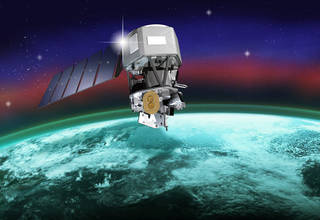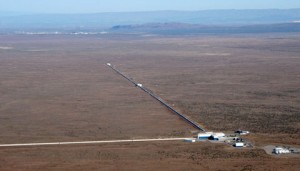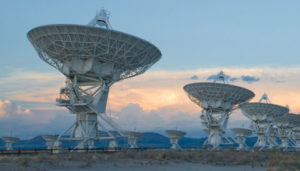Among its many effects, the U.S. government shutdown has created a struggling postdoctoral program, delays in NASA missions, and problems for government scientists trying to continue their research.
The shutdown reached its 34th day today (Thursday), leaving roughly 800,000 public servants unable to work. The standstill is affecting astronomers, too, hundreds of whom are employed by federally funded science organizations, including NASA and the National Science Foundation. Many decline or are unable to speak publicly about the matter, but several sources describe an uncomfortable situation.
The Effect on Young NASA Researchers
The most profoundly affected program right now may be NASA's Postdoctoral Program (NPP), which ran out of NASA money on January 18th. Most NPP postdocs are on unpaid leave. The nonprofit Universities Space Research Association, which facilitates university-government research interactions, has stepped in, covering postdocs’ health insurance through February and offering interest-free loans (cash advances on future salary) through February.
One NASA postdoctoral scholar, who asked to remain anonymous, is allowed to work. But, without access to the computer she needs to do the main part of her job (it’s currently locked away), there's little she can do besides reading. Worse still, she isn't getting paid for what she is doing. She said her student loans — mainly made up of private loans with little forgiveness for financial hardship — come to $1,500 a month. Her parents are financially unable to support her, she added.
Foreign postdocs who hold J-1 visas are further affected, as they must earn a livable wage to maintain their status. If funding ceases, they have a 30-day grace period before they must leave the country. The USRA has reassured postdocs that it is aware of this problem and will work with those affected on a case-by-case basis if the shutdown extends beyond February.
The postdoc program is one of the main avenues by which NASA attracts new talent into its agency. Now these young scholars, already burdened by student loans and in many cases working in cities with a high cost of living, are asking themselves how they will afford it all if the shutdown continues. As federal contractors, they will not receive backpay once the shutdown ends. Some people also worry that the shutdown will make government work in general less attractive to newly minted PhDs, leading to a brain drain away from government-funded agencies.
Disrupted Programs

NASA GSFC / Mary Pat Hrybyk-Keith
Portions of NASA programs have also come to a standstill. This month, representatives from five missions were supposed to host site visits for the competitive NASA Explorers Program, which will select two concepts for future spaceflight. When it comes to the amount of work involved, hosting a site visit is akin hosting a large wedding. Each mission has about 100 people in it, said an investigator involved in one of the proposals, so "a significant fraction of the community is tied up in this competition." As a result, the program will experience delays.
Individual team members are also facing financial woes. For example, researchers who receive funding from the annual NASA Research Opportunities in Space and Earth Science (ROSES) program are currently in limbo because program selections have also been delayed.
Even those scientists with resources to spare remain frustrated. One married couple, both established NASA scientists who also requested to remain anonymous, know backpay is coming to them, and they have the ability to shift money around for a while. The more immediate problems, the wife says, are loss of morale and momentum on science projects that were exciting her. "My team had to do some prototype testing of a future mission that we may fly, and I had almost everything all set up right before Christmas," she explained. But she can’t order the final supplies needed to start testing.
She also laments the number of scientists missing out on important science conferences, such as the several hundred who couldn’t go to the meeting of the American Astronomical Society in early January, a conference often referred to as the “Super Bowl of Astronomy.” The only upshot to not being able to work, she adds, is that their house is the cleanest it's ever been.
Planned NASA launches may face some issues: Mike Liemohn (University of Michigan), Editor in Chief of the Journal of Geophysical Research: Space Physics, worries about the launch of NASA's Ionospheric Connections Explorer (ICON), which was delayed last year into the first quarter of 2019. It was supposed to launch from NASA's Kennedy Space Center, but while necessary spaceflight operations do continue, he said it's unclear to the community if that proviso extends to ICON. "My fear is that ICON will slip in the launch schedule,” Lieomohn says, “and there will be a ripple effect throughout mission launches for quite a while afterwards because of this."
Uncertainty of Possible Prolonged Shutdown

LIGO / NSF
The shutdown’s effects extend beyond NASA as well. Several large facilities are currently funded, but their staffs are worried that a long-term stalemate will hurt their operations. For example, the Laser Interferometer Gravitational-Wave Observatory (LIGO) scientific collaboration, which depends in part on NSF funding, is fine for now – but that could change in a few weeks, says spokesperson David Shoemaker (MIT).
"No immediate issues due to the shutdown have been brought to my attention," he told S&T. NSF had already approved the lab’s funds in advance of the shutdown, and it’s functioning normally — minus the fact that any NASA colleagues involved in the collaboration haven’t been able to work, that is. However, he added, “There is no doubt that LIGO will run into serious problems on the order of a month or two of continued U.S. government shutdown, and with the planned start of the next observing run – O3 – in early April, it could be very disruptive."
He also added that U.S. participation in the space-based Laser Interferometer Space Antenna (LISA) gravitational-wave mission is at a standstill, creating some tension.

NRAO / AUI and NRAO
Likewise, the National Radio Astronomy Observatory (NRAO), which operates the Very Large Array in New Mexico as well as the hemisphere-spanning Very Long Baseline Array and (jointly) the Atacama Large Millimeter/submillimeter Array (ALMA) in Chile, anticipates receiving NSF funding through mid- to late- February, says public information officer Dave Finley. The NRAO is committed to continue funding ALMA, he adds, because of contracts with Chilean employees. However, beyond February, other programs run into trouble. "If the shutdown were to continue into the spring, we believe that U.S.-based NRAO activities will eventually shut down,” he adds.
Even if the shutdown were to end tomorrow, astronomy and other science programs could not restart instantly. Routine computer maintenance, equipment checkups, and other simple everyday activities have all been halted. Moreover, collaborations must be restarted, notes rechecked, and trips rebooked — scientists will need to remind themselves where they were on their projects before continuing.
"Some things are more important in an absolute life sense to the public than we are,” one scientist acknowledged. “We are neither the target of the shutdown, nor the motivating factor for getting back online." But regardless of whether science is a public priority, it has become a political victim. She sees the situation as a signal that all scientists must pay more attention to politics. The science community needs to step up now to speak to politicians, she urged, before projects unravel further and the pinch on financial resources forces talented young scientists to seek new employment.
Latest updates on deadlines and delays from the American Astronomical Society
Notes from American Geophysical Union scientists affected by the shutdown
News Editor Monica Young and Science Editor Camille M. Carlisle contributed to the reporting for this story.
 3
3
Comments
Gerald-Hanner
January 24, 2019 at 12:11 pm
The down side of working for governments. Politics trumps science.
You must be logged in to post a comment.
Anthony Barreiro
January 25, 2019 at 6:47 pm
Thanks for this detailed report. It's easy to break things, but much harder to put them back together. I very much hope that these outstanding scientists, engineers, technicians, and support staff will be able to get back to work soon.
NASA is an invaluable national resource. Beginning with the creation of the agency by President Eisenhower in 1958, NASA has always had nearly unanimous bipartisan support from Congress and successive administrations, even during times of grave political crisis. Tragically, under the Trump administration, NASA has become collateral damage.
It is possible to insulate science from politics. We used to do it. I hope we will come to our senses and recommit ourselves to the norms of objective science.
You must be logged in to post a comment.
Alan Potts
January 26, 2019 at 1:16 am
We live in a complex world with so many interactions / competing influences.
Elizabeth: thank you for a very accurate and explorative article.
My heart really goes out to the young NASA postdocs. It must be a very difficult time for them. NASA employees should not be made victims of political play. I understand how it feels to be unable to, for example, pay your rent and other monthly bills. And the stress that causes. It is very cruel.
LIGO and LISA (the future of astronomy may lie with LISA. It is an astonishing and astounding mission that may forever change astronomy and our knowledge of the Universe via gravitational wave observations).
I send my heartfelt sympathy to all affected by the present shutdown. This is one world. One Universe. But: divided by lower and lesser motivations. Stay strong!
You must be logged in to post a comment.
You must be logged in to post a comment.